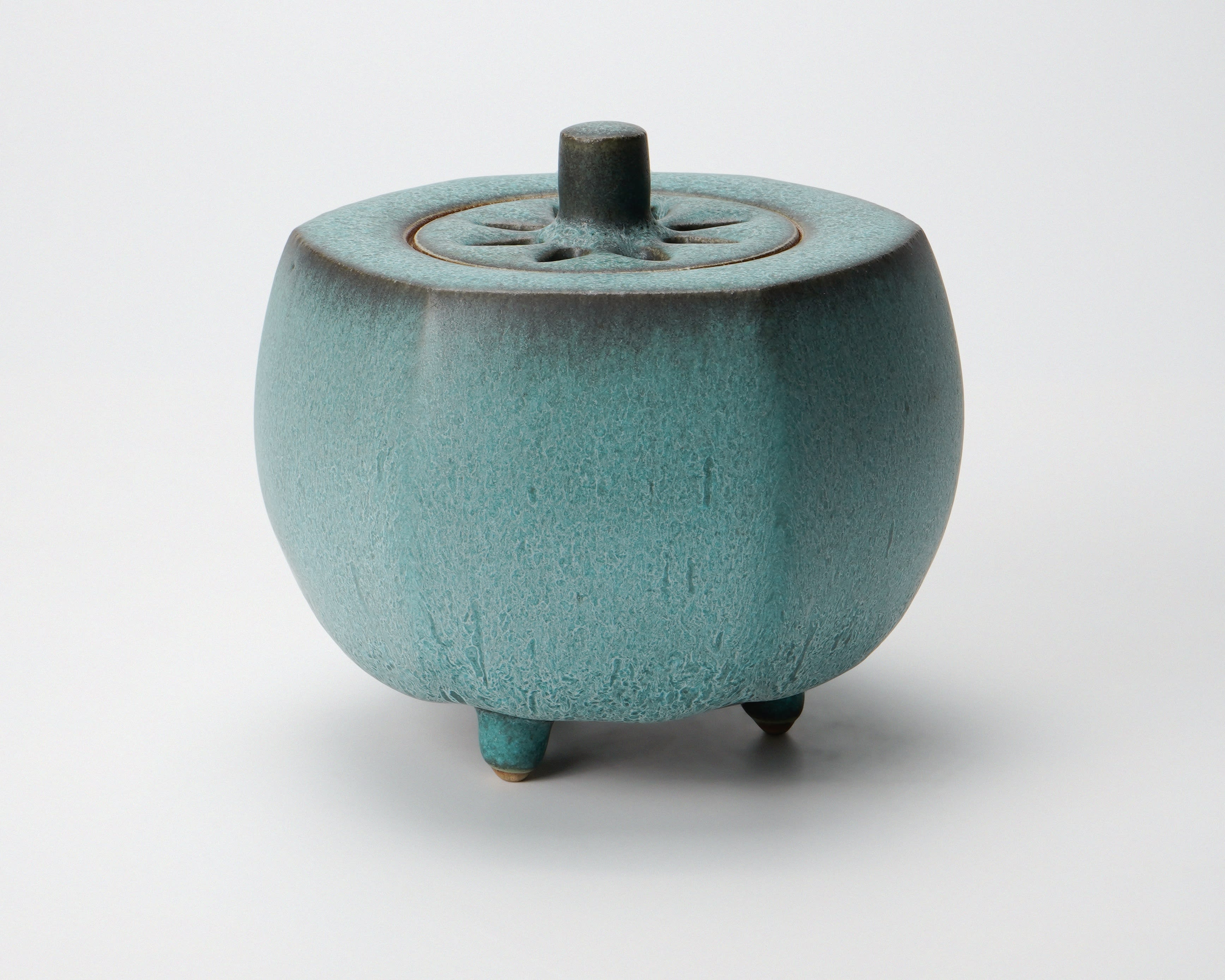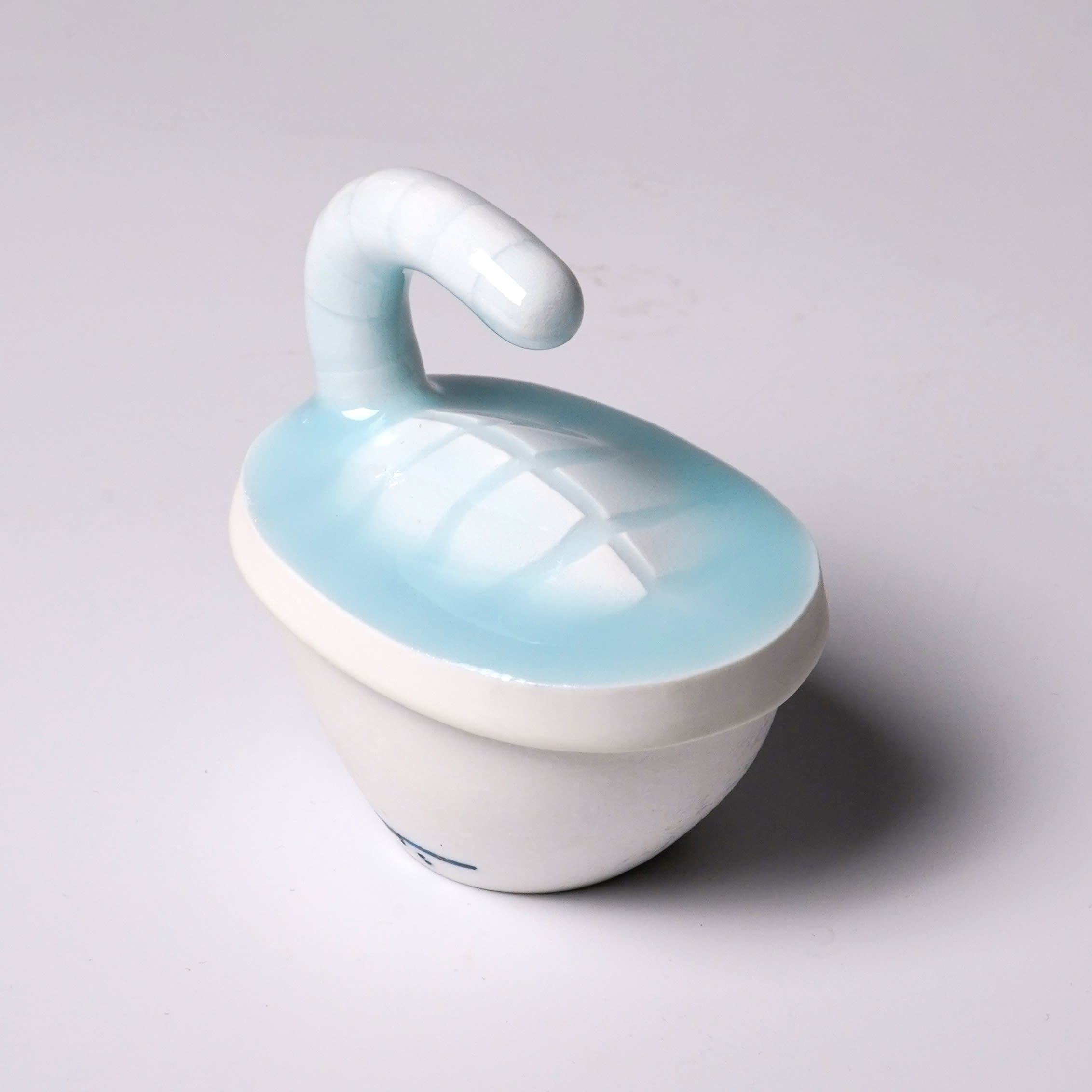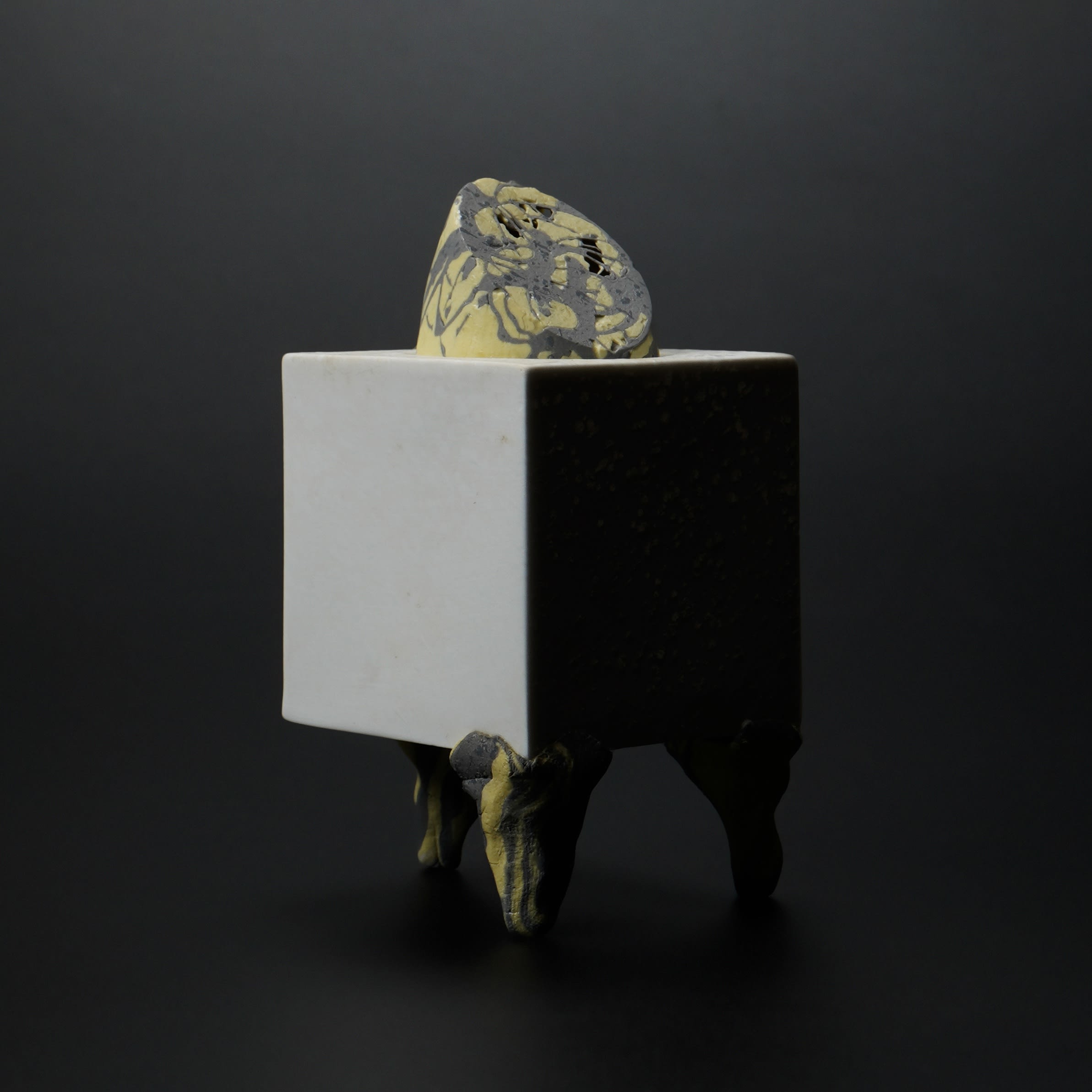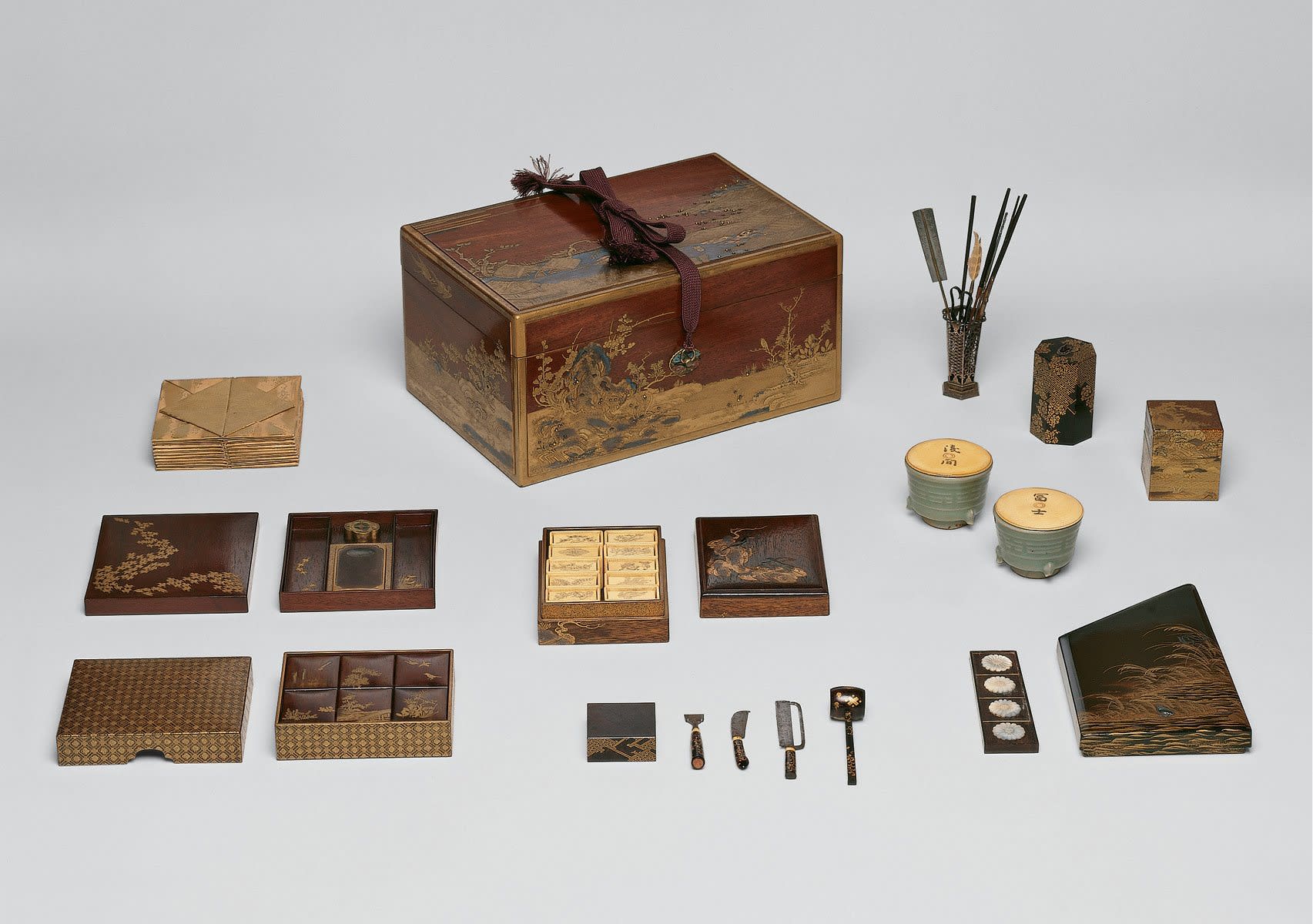
Incense offers a wealth of historical material as a complex, multisensory element. Its forms are diverse and can include a wide range of plants and minerals, reflecting the various cultures and purposes it served. In ancient China, archaeologists have discovered bronze incense burners in tombs dating back to the Han dynasty. Later, new styles of incense burners that encompass a range of materials such as jade and ceramic spread across East Asia, coinciding with the introduction of Buddhism, which traveled along the overland and maritime trading routes across Asia.
Modern ceramics frequently draw inspiration from ancient Chinese and Korean incense burner designs, reinterpreting these historic forms through the lens of contemporary ceramic artistry. A notable comparison can be seen between a Qing dynasty jade incense burner from the Metropolitan Museum of Art and a similar celadon piece by Japanese potter Miyashita Zenju (father of the celebrated contemporary potter, Miyashita Zenji), illustrating how traditional shapes and materials are transformed in modern ceramic practices.


Miyashita Zenju 宮下善寿 (1901-1988), Celadon incense burner, with signed wood box, celadon glazed stoneware, (h) 12 × (w) 13 cm. Image courtesy of Dai Ichi Arts, LTD. and Yoriko Kuzumi. Click here for more information.

Miyashita Zenji 宮下善爾 (1939-2012), Incense burner with green crystal glaze 緑晶釉六方香炉, with signed wood box, stoneware, (h) 10.5 × (diameter) 11.7 cm. Image courtesy of Dai Ichi Arts, LTD. and Yoriko Kuzumi. Click here for more information.
Incense held multiple roles in historical Japanese society, valued for its aromatic qualities and diverse applications. Initially, aromatic substances were prized in ritual settings, used for both religious purification and scholarly purposes. Additionally, incense was integral to medicine and cosmetics, particularly in the form of perfumes, establishing its importance in trade and commerce. When Buddhism was introduced to Japan via China and Korea, incense burners and containers were brought along, symbolizing the art of incense appreciation. The earliest record of incense use in Japan dates back to the reign of Empress Suiko in the 6th century, when agarwood was burned for rituals. By the Nara period (8th century), decorative incense containers and burners became fashionable at the Japanese court, where courtiers blended fragrant materials like powdered lily magnolia, agarwood, and mugwort for use in rituals. It was also seen as an aid for scholarly contemplation, reading, and meditation. Initially, incense and its implements were restricted to the aristocracy, remaining within courtly circles until the Muromachi period (1392-1573).
Incense appreciation expanded during the Heian period (794-1185). The classic Tale of Genji describes in detail the preparation of incense and its implements. A typical incense set from this period suggests an incense box with raw materials such as musk and sandalwood, along with a small spatula for transferring incense to the burner. Contemporary reinterpretations of such incense implements showcase the creativity and inspiration that the practice of burning incense continues to evoke. For example, see below for four modern examples of incense boxes and burners, fashioned in the likeness of two of the twelve Japanese Zodiac (Jūnishi 十二支) animals: the rabbit and tiger. While the first two forms offer more naturalism in the portrayal of animals, contemporary ceramicist Nagae Shigekazu offers a delightful and abstract interpretation of the tiger. In the instance of the box, the tiger's tail protrudes from one end of the small object. Meanwhile, his incense burner, featuring a subtly textured porcelain surface goes even further in his abstraction. The zodiacal tiger is evoked through vibrant feet and a colorful lid, offering an imaginative and modern homage to the traditional form.

Rabbit Incense Burner 萬古焼 兎 香鑪, Meiji period, with signed wood box, Banko Stoneware, (h) 21.5 x (w) 10.6 x (d) 11.9 cm. Image courtesy of Dai Ichi Arts, LTD. and Yoriko Kuzumi.

Suwa Sozan Ⅲ 三代 諏訪 蘇山 (1932-2005), Zodiac (Tiger) incense container with celadon glaze, with signed wood box, porcelain with celadon glaze, (h) 5.5 × (diameter) 7.6 cm. Image courtesy of Dai Ichi Arts, LTD. and Yoriko Kuzumi. Click here for more information.

Nagae Shigekazu 長江重和 (b. 1953), Shape of earth: Zodiac (Ox) incense box, with signed wood box, celadon glazed porcelain, (h) 8.1 × (w) 8.9 cm. Image courtesy of Dai Ichi Arts, LTD. and Yoriko Kuzumi. Click here for more information.

Nagae Shigekazu 長江重和 (b. 1953), Zodiac incense burner: Tiger, with signed wood box, porcelain, (h) 11.4 x (diameter) 6.3 cm. Image courtesy of Dai Ichi Arts, LTD. and Yoriko Kuzumi. Click here for more information.
In the Muromachi period (approximately 1336-1573), incense etiquette evolved alongside the Japanese tea ceremony, becoming an essential part of the matcha tea ritual. This art of incense appreciation, known as kōdō or "The Way of Fragrance," was incorporated into Japanese cultural practices alongside sadō (The Way of Tea) and kadō (The Way of Flowers, also known as ikebana). Incense games also emerged, such as “Genji Incense” (Genjikō), in which players would try to identify different incense blends that hinted at chapters of The Tale of Genji.
Kōdō, or "the Way of Fragrance," became a refined cultural practice, with participants enjoying slivers of fragrant wood burned to release unique scents. This art form comprises two main practices: monkō (the appreciation of incense through its scent) and kumiko, a game where participants distinguish between various types of incense.

Box and assorted implements for the incense game, Lacquered wood, sprinkled gold; raised silver and gold designs, 17th-18th century, Japan. Mary Griggs Burke Collection, Gift of the Mary and Jackson Burke Foundation at the Minneapolis Institute of Art. Image courtesy of the Minneapolis Institute of Art. Click here to see more about the artwork.
Today, Japan’s rich incense tradition continues. Incense remains popular in homes to elevate daily life, as a sought-after gift, and as an implement in religious ceremonies, carrying forward a practice with deep historical roots in East Asia.

Kiyomizu Rokubei VII 七世清水六兵衛 (1922-2006), "SEKITOYO" 9 席陶容・九 (Incense Burner), 1989, signed at the bottom & accompanied with a signed wood box, stoneware. Image courtesy of Dai Ichi Arts, LTD. and Yoriko Kuzumi. Click here for more information.

Kiyomizu Rokubei VIII 八代 清水六兵衛 (b. 1954), Cube shaped incense burner with black glaze, with signed wood box, toneware, (h) 9 × (w) 9 × (d) 9 cm. Image courtesy of Dai Ichi Arts, LTD. and Yoriko Kuzumi. Click here for more information.